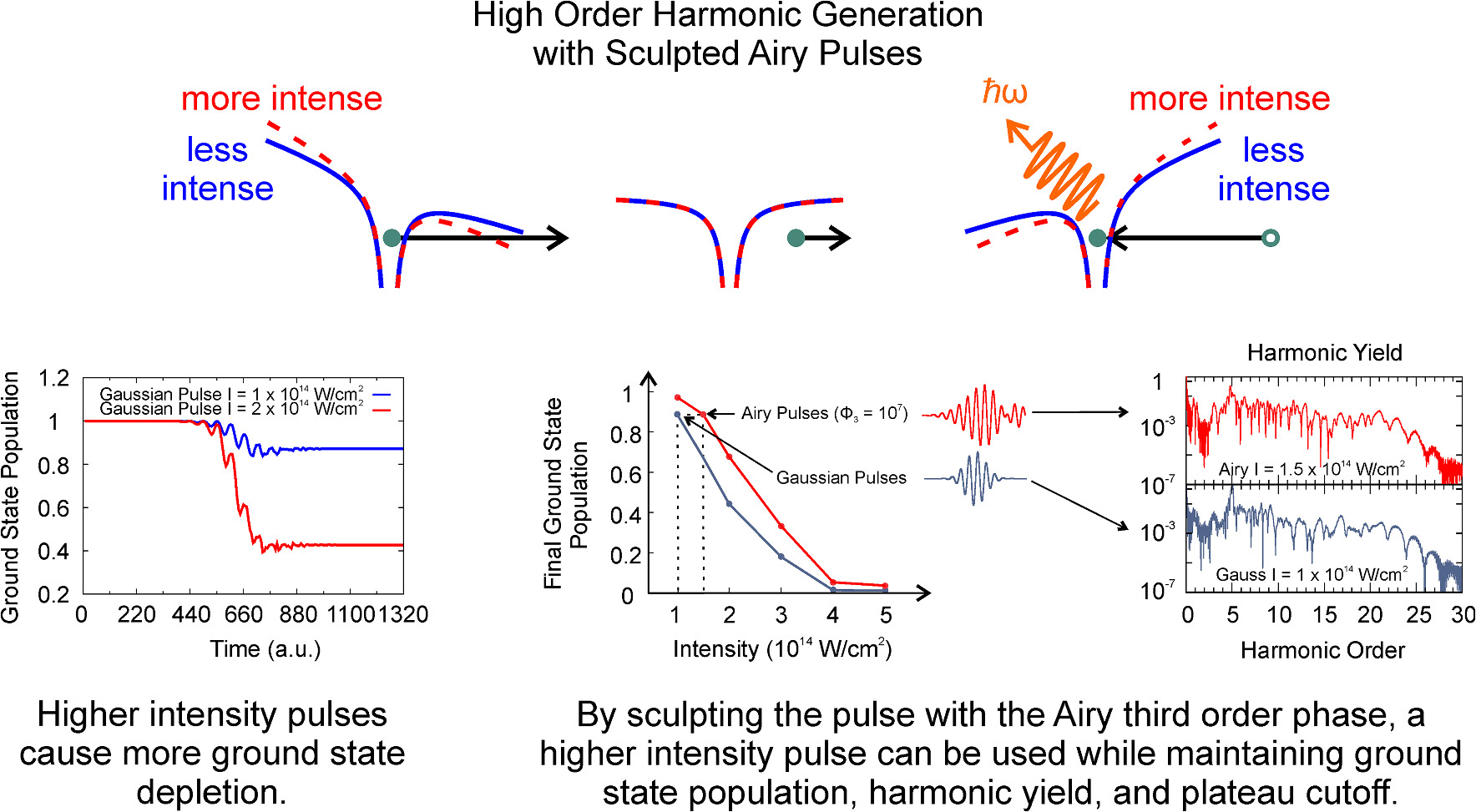https://doi.org/10.1140/epjd/s10053-024-00890-y
Regular Article - Ultraintense and Ultrashort Laser Fields
Spectral phase pulse shaping reduces ground state depletion in high-order harmonic generation
1
Department of Physics, Illinois State University, Normal, IL, USA
2
Department of Physics, Guangdong Technion - Israel Institute of Technology, 241 Daxue Road, 515063, Shantou, Guangdong, China
3
Technion - Israel Institute of Technology, 32000, Haifa, Israel
4
Guangdong Provincial Key Laboratory of Materials and Technologies for Energy Conversion, Guangdong Technion - Israel Institute of Technology, 241 Daxue Road, 515063, Shantou, Guangdong, China
Received:
18
March
2024
Accepted:
24
June
2024
Published online:
13
August
2024
High-order harmonic generation (HHG) has become an indispensable process for generating attosecond pulse trains and single attosecond pulses used in the observation of nuclear and electronic motion. As such, improved control of the HHG process is desirable, and one such possibility for this control is through the use of structured laser pulses. We present numerical results from solving the one-dimensional time-dependent Schrödinger equation for HHG from hydrogen using Airy and Gaussian pulses that differ only in their spectral phase. Airy pulses have identical power spectra to Gaussian pulses, but different spectral phases and temporal envelopes. We show that the use of Airy pulses results in less ground state depletion compared to the Gaussian pulse, while maintaining harmonic yield and cutoff. Our results demonstrate that Airy pulses with higher intensity can produce similar HHG spectra to lower intensity Gaussian pulses without depleting the ground state. The different temporal envelopes of the Gaussian and Airy pulses lead to changes in the dynamics of the HHG process, altering the time-dependence of the ground state population and the emission times of the high harmonics.
© The Author(s) 2024
 Open Access This article is licensed under a Creative Commons Attribution 4.0 International License, which permits use, sharing, adaptation, distribution and reproduction in any medium or format, as long as you give appropriate credit to the original author(s) and the source, provide a link to the Creative Commons licence, and indicate if changes were made. The images or other third party material in this article are included in the article's Creative Commons licence, unless indicated otherwise in a credit line to the material. If material is not included in the article's Creative Commons licence and your intended use is not permitted by statutory regulation or exceeds the permitted use, you will need to obtain permission directly from the copyright holder. To view a copy of this licence, visit http://creativecommons.org/licenses/by/4.0/.
Open Access This article is licensed under a Creative Commons Attribution 4.0 International License, which permits use, sharing, adaptation, distribution and reproduction in any medium or format, as long as you give appropriate credit to the original author(s) and the source, provide a link to the Creative Commons licence, and indicate if changes were made. The images or other third party material in this article are included in the article's Creative Commons licence, unless indicated otherwise in a credit line to the material. If material is not included in the article's Creative Commons licence and your intended use is not permitted by statutory regulation or exceeds the permitted use, you will need to obtain permission directly from the copyright holder. To view a copy of this licence, visit http://creativecommons.org/licenses/by/4.0/.





